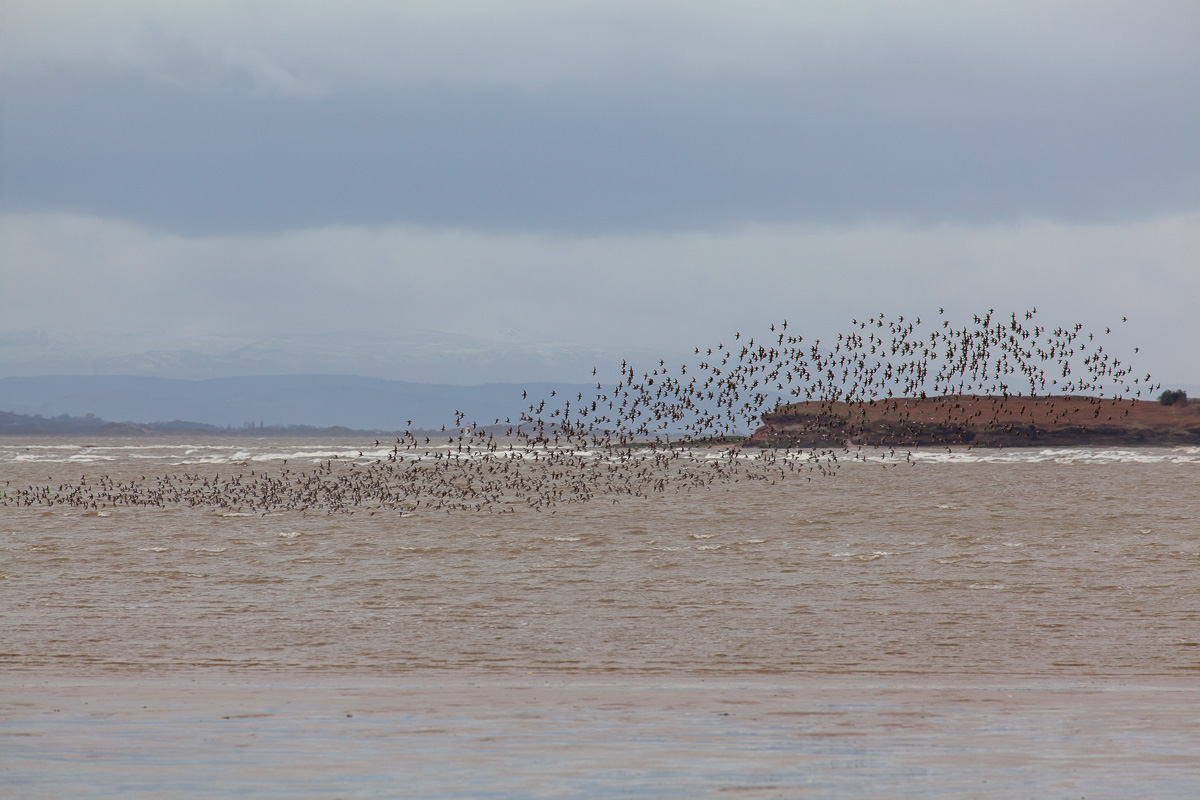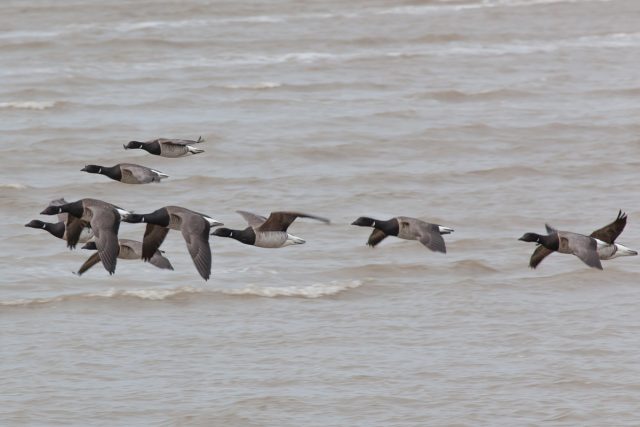· Wirral ·
To Red Rocks, Hoylake, on the top-left corner of my native Wirral Peninsula. I’d seen that the tide was due in early afternoon, so I’d decided to look for the large flocks of waders I’d spotted from afar last week, to try to work out whether they were knot or dunlin.
I hadn’t been to Red Rocks for years. The views across the sparkling Dee Estuary to Hilbre Island and North Wales were delightful, although the westerly breeze was biting. I took a short walk between Phragmites reeds and wind-coiffured marram grass, admiring beached mermaids purses and razor shells, then returned to the slipway and leant against a rock to wait for the tide to come in.
The tide came in remarkably quickly. Large flocks of small waders covered the shoreline over towards Hilbre. Every so often, as the tide rose, small clumps of waders would take flight to reposition in less deep water. The water’s edge was a swirling mass of waders. After about half an hour, as the birds were forced nearer and nearer, even through my crappy binoculars, I could make out they were mostly dunlin, although I did spot a small number of sanderlings on the shoreline in front.

Suddenly, all the birds—several thousand of them—took flight as a fat, black labrador padded across the sand towards them. They disappeared around the beach’s eponymous red sandstone outcrop towards Hoylake front. I decided to clamber across the rocks to see what was going on around the corner.
The rising tide suddenly brought new interlopers in the form of kite-surfers. As they rounded the corner from the Dee Estuary into the Irish Sea, they encountered bigger waves and soared into the air, borne by their bulging kites. They went incredibly high. To prevent winter wildlife being disturbed, surfing is banned in zones along this coast. Having consulted a map on the beach-side noticeboard earlier, I would say these surfers were certainly encroaching where they shouldn’t. One of them headed over to a small island that would soon be submerged. As he landed on the island, a group of eighteen brent geese took flight and headed towards me. I fired away with my camera, thrilled they were coming so close. They landed in the sea right in front of me, soon being joined by more and more birds until they numbered around forty. Then one of the surfers came a bit too close for their liking, and they headed off up the Dee Estuary in tight formation.

Despite my gloves, my hands were now bitterly cold, so I decided to return to the car and drive up to Hoylake Promenade to see what was going on up there. More brent geese waddled along the shore. A couple of thousand oystercatchers huddled on the distant water-line, facing into the wind. Shelduck stood around doing nothing much. Occasional formations of dunlin whirred about.
I got out the car to photograph the nearest geese. As I was doing so, I noticed a small, particularly tight formation of dunlin behind them, out to sea. It was so tightly packed, it looked like a bait-ball of fish. Why would they be packed together that close? And then I saw the peregrine…
The peregrine falcon rounded the cluster of dunlin, then jinked towards them. The cluster scattered and reformed. Another jink. The cluster scattered and reformed again. But the falcon spotted a solitary, straggling bird and flew between it and the cluster. Through my binoculars, I watched as the lone dunlin ducked and dived to avoid the peregrine’s repeated attacks. It was utterly thrilling. I was convinced I was about to witness my first ever peregrine kill. But the peregrine was only flying for its lunch, while the dunlin was flying for its life. After thirty seconds or so, the peregrine decided it had expended too much energy on this chase and peeled off. It flew above the promenade directly towards me. I raised my camera, hoping to get a shot of a close fly-by, but suddenly the peregrine banked sharply to the left and shot towards a large group of feral pigeons on a nearby rooftop. More pandemonium, during which I finally lost track of the peregrine.
All in all, an utterly mesmerising couple of hours.

Leave a Reply